Excerpts from Jim Conrad's
Naturalist Newsletter
from the October 21, 2012 Newsletter issued from the valley of the Dry Frio River in northern Uvalde County, southwestern Texas, on the southern border of the Edwards Plateau; elevation ~1750m (~5750 ft); N29.62°, W99.86°; USA
REDSPIKE MEXICAN HAT
One of the most eye-catching wildflowers blooming nowadays is shown below with its flowers, fruiting heads and wiry-looking leaves
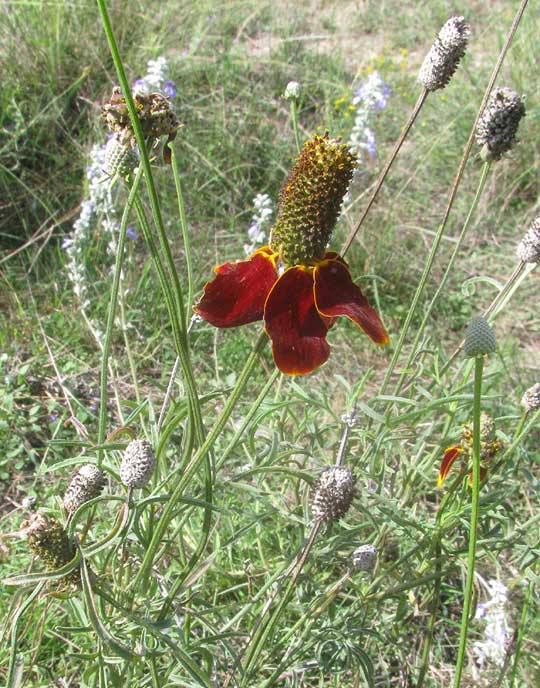
A closer look at that bodacious blossom is provided below:
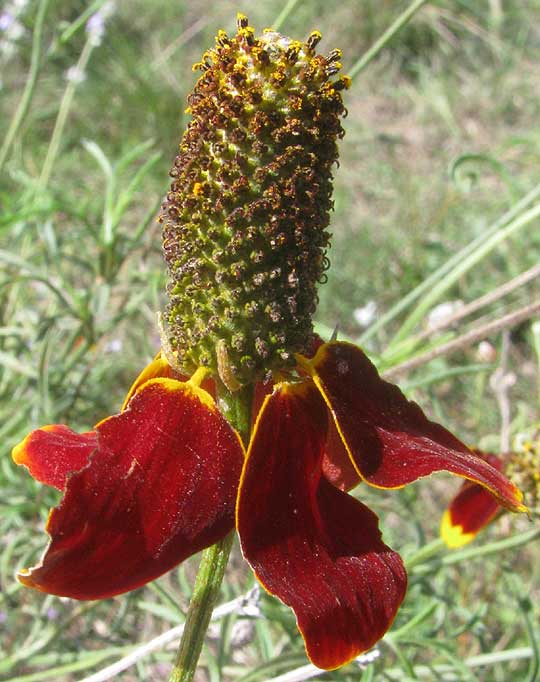
Those yellow-margined, reddish-brown, petal-like ray flowers are enough to cause you to stop and admire, but what's unusual is that tall, cylindrical item in the flower-head's center. Here we're dealing with a member of the Composite, or Sunflower Family, so the bumps on the cylindrical item surrounded by yellow-fringed ray flowers are disk flowers. This wildflower was already flowering when I arrived here in late August, so some heads are mature now, bearing only clusters of achene-type fruits. You can see such a head with one side stripped of achenes -- maybe by a feeding bird -- below:
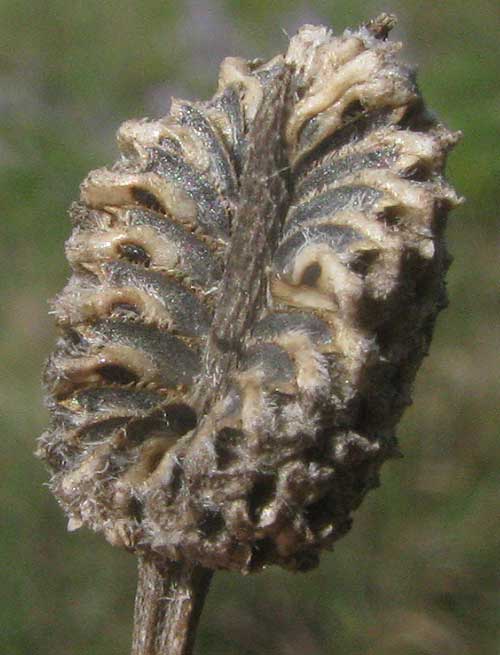
The plant's pinnate leaves with very slender, hairy, gland-dotted lobes are shown below:
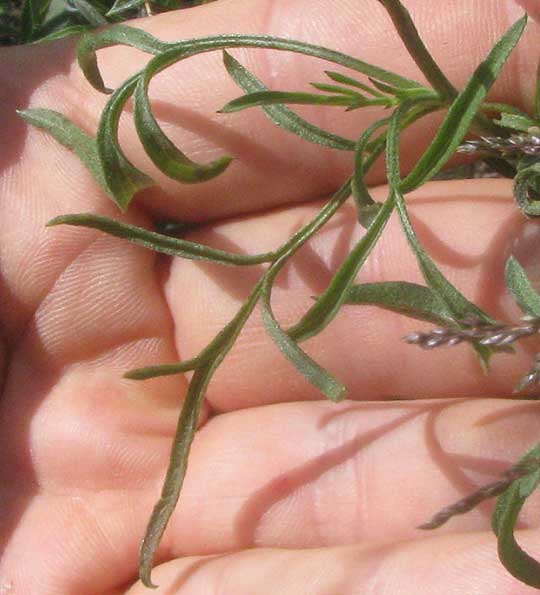
This spectacular wildflower often is called the Redspike Mexican Hat, also Upright Prairie Coneflower, or just Mexican Hat. It's RATIBIDA COLUMNIFERA, widely distributed in North America but mostly in the central prairie states and provinces from Canada deep into arid northern Mexico. It's mainly a prairie wildflower, but as a species it's adaptable enough to occur along roadsides and in other disturbed, fairly weedy sites. Though around here I've seen only plants with mostly reddish-brown ray flowers, blossoms on plants in other areas may have much more yellow on them, or be entirely yellow.
Not only is Redspike Mexican Hat a beautiful plant, but also it's easily grown in average, dry to medium, well-drained soils in full sun, so it's a favorite in wildflower gardens. It can be grown from seeds, though the plant requires two years to bloom.
Indigenous Americans are known to have made pleasant-tasting teas from Mexican Hat's leaves and flowers. Medicinally the plant's leaves and stems are said to relieve pain. The tea has been used for headaches, stomach aches and fevers, as well as for several other pains and miseries.
from the July 14, 2013 Newsletter issued from the Frio Canyon Nature Education Center in the valley of the Dry Frio River in northern Uvalde County, southwestern Texas, on the southern border of the Edwards Plateau; elevation ~1750m (~5750 ft); N29.62°, W99.86°; USA
MEXICAN HATS GALORE
Since writing the above I've seen photos of acres of Redspike Mexican Hats covering the valley floor in previous springs, though this spring was so droughty that only a few appeared. Three weeks ago it rained enough to cause these wildflowers to emerge and blanket certain low spots such as part of a basketball-court-size patch shown below:
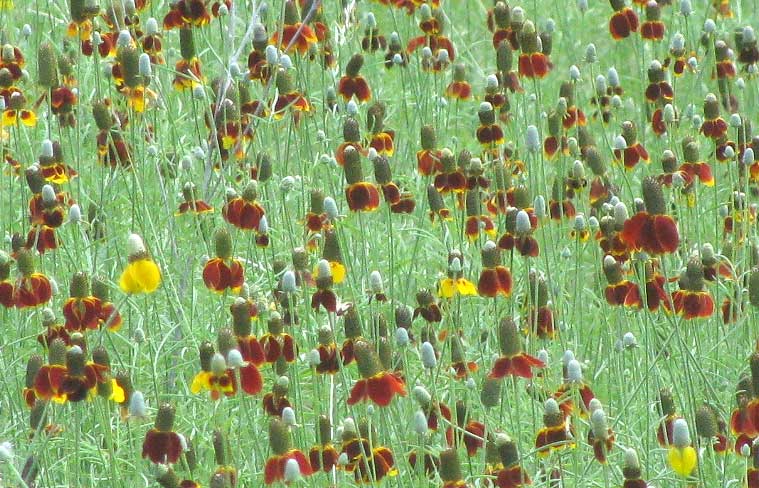
Something I didn't notice in October but which is apparent with so many Redspike Mexican Hats flowering next to one another is that the color of the flowering heads' petal-like ray flowers -- the drooping, colorful parts of each flowering head -- range from entirely yellow to entirely dark brown, with most in-between.